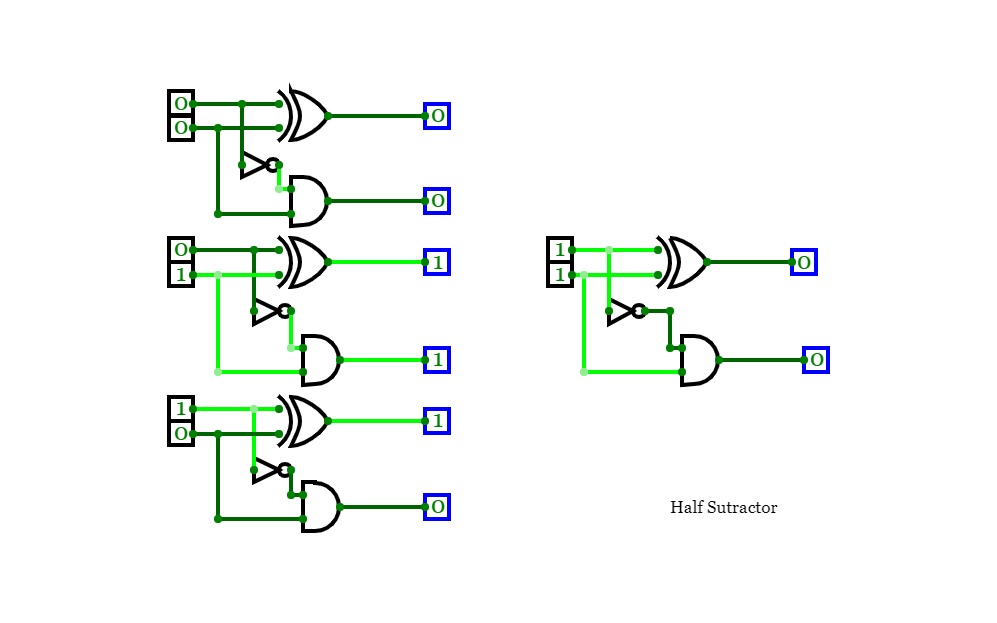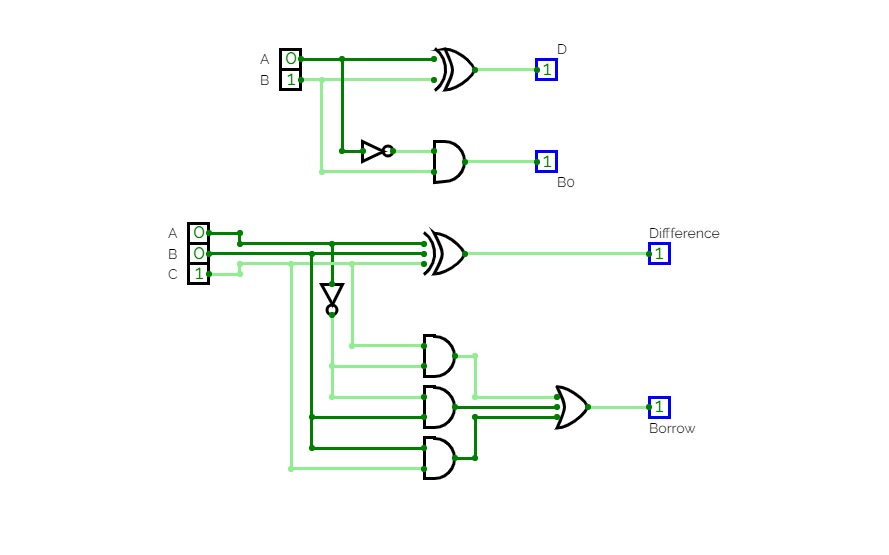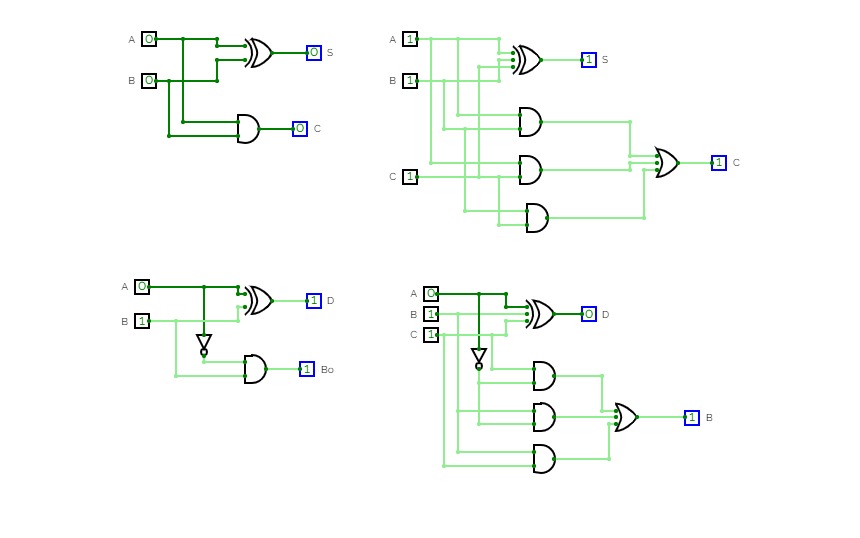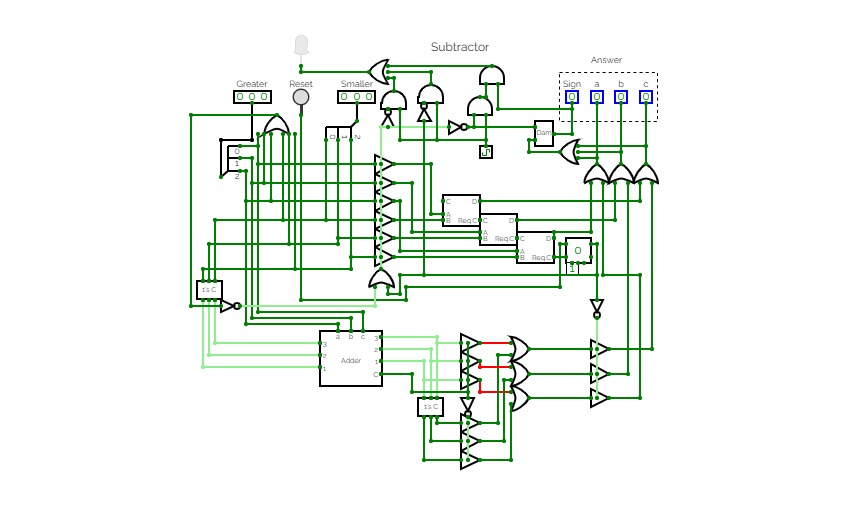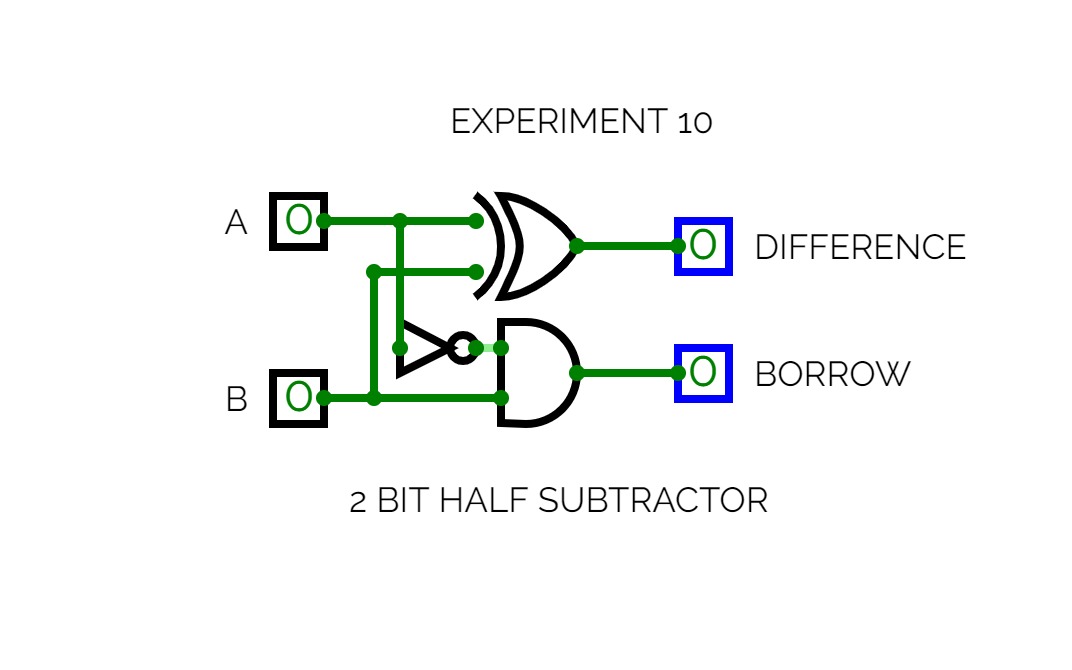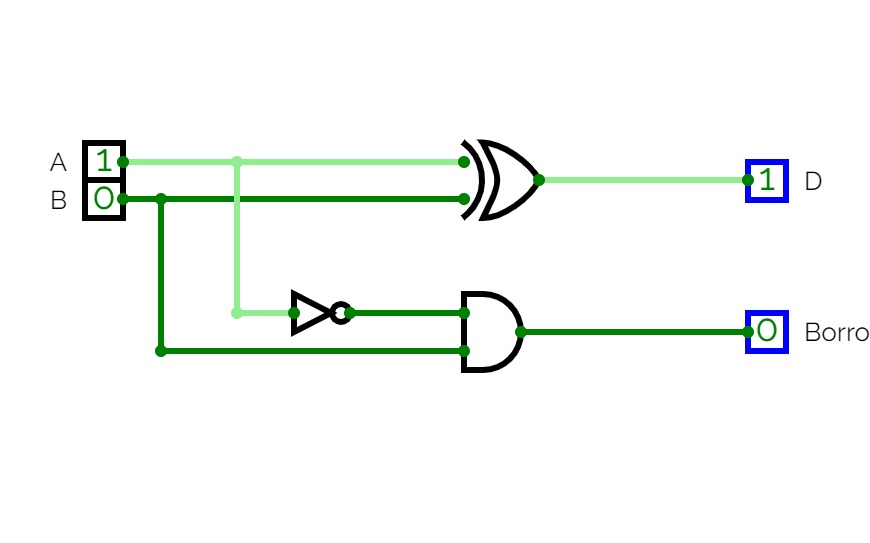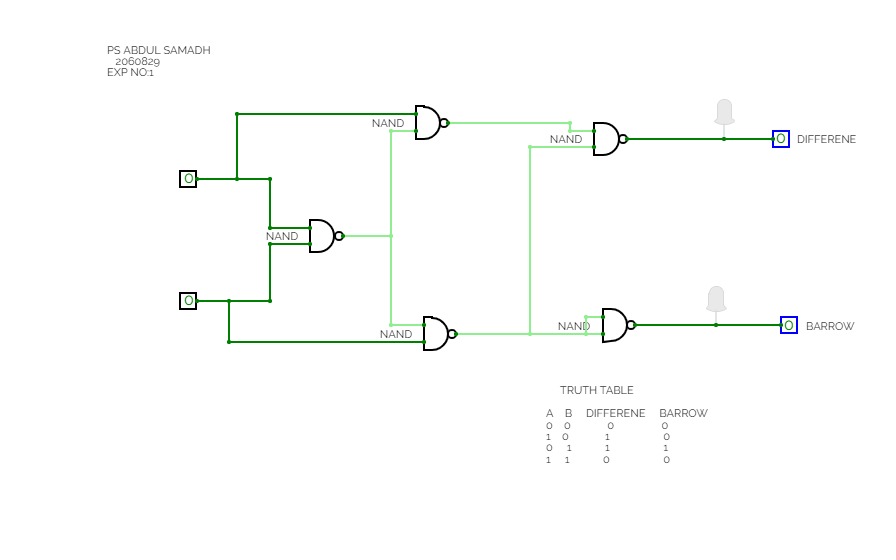Half Subtractor
Half SubtractorHalf Subtractor
Half SubtractorSubtractors
SubtractorsHalf Subtractor:-
The half subtractor is also a building block for subtracting two binary numbers. It has two inputs and two outputs. This circuit is used to subtract two single bit binary numbers A and B. The 'diff' and 'borrow' are two output states of the half subtractor.
Block diagram:-

Truth Table:-

The SOP form of the Diff and Borrow is as follows:
Diff= A'B+AB'
Borrow = A'B
Diagram:-

*formed using simulator provided.
Full Subtractor:-
The Half Subtractor is used to subtract only two numbers. To overcome this problem, a full subtractor was designed. The full subtractor is used to subtract three numbers A, B, and C, which are minuend, subtrahend, and borrow, respectively. The full subtractor has three input states and two output states i.e., diff and borrow.
Block diagram:-

Truth Table:-

The SOP form can be obtained with the help of K-map as:-

Diff=xy' z'+x' y' z+xyz+x'yz'

Borrow=x' z+x' y+yz
Diagram:-

*formed using simulator provided.
Half Subtractor and Full Subtractor
Half Subtractor and Full SubtractorProject 2
Project 2Implement Half Adder, Full Adder, Half Subtractor and Full Subtractor.
Project 2
Project 2Half Adder, Full Adder, Half Subtractor, Full Subtractor.
Half Subtractor
Half SubtractorLab 4.3 (Half Subtractor)
Lab 4.3 (Half Subtractor)Half Subtractor Using NOR gate
Half Subtractor Using NOR gateSubtract
SubtractInstructions: If the LED is blinking, Press the reset button and then only input your values to obtain the difference. The MSB in the output and blinking LED indicate the negative sign.
EXPERIMENT2
EXPERIMENT2EXPERIMENT 2
EXPERIMENT 2EXPERIEMNT 10
EXPERIEMNT 10Implementation of a Half Subtractor using Basic Gates
EXPERIMENT 12
EXPERIMENT 12Implementation a Full subtractor using 2 Half Subtractors
Half Subtractor
Half SubtractorHalf Subtractor
Half SubtractorFinal
FinalHalf Adder, Half Subtractor, Full Adder, Full Subtractor with its NAND implementation.
HALF SUBTRATOR
HALF SUBTRATORHalf Subtractor using NAND gate
Half Subtractor using NAND gateHalf Subtractor using NOR gate
Half Subtractor using NOR gateCombinational Circuits
Combinational CircuitsImplement and verify Combinational Circuits
Half Subtractor by Souvik Ghosh
Half Subtractor by Souvik GhoshProgram 7 - Half and Full Subtractor
Program 7 - Half and Full SubtractorHalf Subtractor and Full Subtractor
Half Subtractor
Half SubtractorHalf Subtractor
Half SubtractorDigital Electronics
Digital ElectronicsR-S Flip flop
D flip flop
J-K flip flop
T flip flop
Half Adder
Full Adder
Half Subtractor
Full Subtractor
Subtractors
SubtractorsSomador/Subtrator Controlado
Somador/Subtrator ControladoHalf Subtractor and Full Subtractor
Half Subtractor and Full SubtractorFull Subtractor
Full SubtractorA full subtractor is a digital circuit that subtracts two binary bits, accounting for a borrow input, and produces a difference and a borrow output. It has three inputs (minuend, subtrahend, borrow-in) and two outputs (difference and borrow-out).


